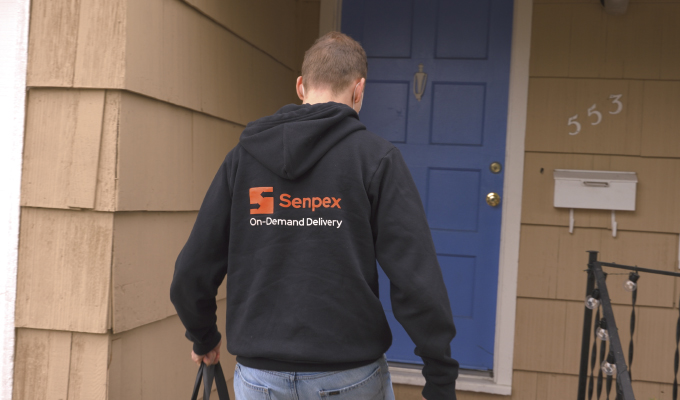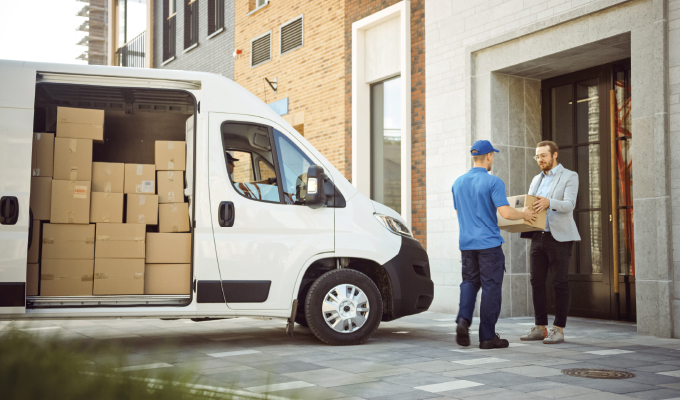The logistics and shipping industry continues to grow, despite the historical supply chain issues brought on by the global pandemic. Demand is increasing for faster shipping speeds and more technologically advanced logistics processes.
One of the most vital parts of the supply chain is last-mile delivery, the process of moving goods from the warehouse to the customer’s front door. The speed of last-mile delivery is of the utmost importance to customers, but it can also be the most costly part of the delivery process.
Any inefficiencies in last-mile delivery can lead to added costs, severely affecting the bottom line for the shipping company and causing disappointments for the customers. Making the last-mile delivery process cost-effective and technologically evolved is imperative for businesses that wish to scale and continue to best serve their customers.
PROBLEMS IN THE PROCESS
There are several issues that can arise within the space between the warehouse and the customer. It’s the role of innovative delivery partners to develop ways of improving the last-mile process for both shipping companies and customers.
Issues outside of exorbitant cost include failed deliveries, antiquated delivery processes, unpredictable transit, lack of proper delivery infrastructure, inefficient tracking, and outdated shipping logistics technology. It may feel like there are a litany of issues that could throw a wrench in efficient delivery, causing some concern for growing e-commerce businesses. However, it’s essential that these businesses are aware of what could go wrong and have a set plan to address possible issues.
According to Morgan Stanley, e-commerce accounted for 21% of global purchasing in 2021. This increase in online purchasing and selling has led to some hiccups in shipping logistics that still need to evolve with technological advancements and customer-focused policies. To avoid issues and inefficiencies within last-mile delivery, everything from the warehouse inventory process to driver staffing needs to be evaluated.
One intervention that can help close shipping gaps is real-time logistics information. Advanced technologies that can provide up-to-date driving routes for delivery drivers, real-time stock numbers, and automated delivery processes can make last-mile delivery faster and more efficient. In addition, quick and accurate data analysis can help shipping companies change course if a process needs to be fixed in order to serve consumers better.
SUCCESS WITH AI
Machine learning is touching every industry imaginable. With lightning-fast data analysis capabilities, better decisions can be made by e-commerce companies and shipping companies seeking to improve their last-mile delivery process.
Machine learning has been used to better predict customer preferences. By analyzing patterns in data, the last-mile process can be optimized. Once e-commerce companies and their shipping partners are aware of customer preference, shipping processes and routing can be adjusted accordingly. With correctly planned routes, shipping times can be cut significantly.
AI can also improve the online customer experience. Today’s customers expect minute-by-minute delivery updates and communication about their orders. Customers can feel as if they have more control over the shipping process if they can track their package from the warehouse to their doorstep and make changes if necessary. For example, if they wish to be home for an important delivery, they can contact a company through chatbots or automatically adjust delivery times online in real time.
There may be a number of deal breakers regarding customer satisfaction, but SpeedLine Solutions reports slow delivery times rank highest on the list. When a customer is counting on an item to arrive at a specific time, that time missed could lead to lost revenue for the e-commerce or shipping company due to customers refusing to use their service again. According to a study conducted by McKinsey, nine of 10 customers expect two to three-day shipments as the absolute standard.
Other customer issues include deliveries turning up unexpectedly, shipments arriving damaged, a lack of shipping options at checkout, and poor communication and customer service options when something goes awry. AI and machine learning technologies can help shipping and logistics companies better serve these discerning customers.

IMPORTANCE OF IMPROVEMENT
As the pandemic raged, same-day and next-day delivery became not only increasingly important, but expected. Many brick-and-mortar stores closed shop, and delivery became the only way consumers and many essential businesses could receive goods.
As the pandemic has waned, however, people’s expectations for the delivery process have not shifted back to pre-pandemic standards. Now that consumers and businesses are aware of the ability of lightning-fast, accurate shipping and delivery, they continue to expect it. E-commerce only continues to boom, with Morgan Stanley predicting the market to hit upwards of $5.4 trillion by 2026. It’s predicted that the pandemic boom in online shopping will not flatten even as shutdowns end and brick-and-mortar businesses open their doors once again. The pandemic may have changed customer expectations forever, and businesses will need to continue to pivot and adjust their processes to keep up.
Improving the timeliness of deliveries is advantageous not only for the customer but for the e-commerce company, as well. By closing gaps in delivery times and improving areas needing improvement, businesses can expect better profit margins. Not only will they retain more customers, but fuel costs, staffing costs, and operational expenses will also improve.
Getting customers what they need in a timely manner is the basis of e-commerce success. The importance of the last-mile delivery process cannot be overstated. With innovators using the latest technology to help close service and delivery gaps, companies can significantly improve the most complex and most important components of their supply chains.
ABOUT THE AUTHOR
Anar Mammadov is the CEO of Senpex. Find out more, visit www.senpex.com.




